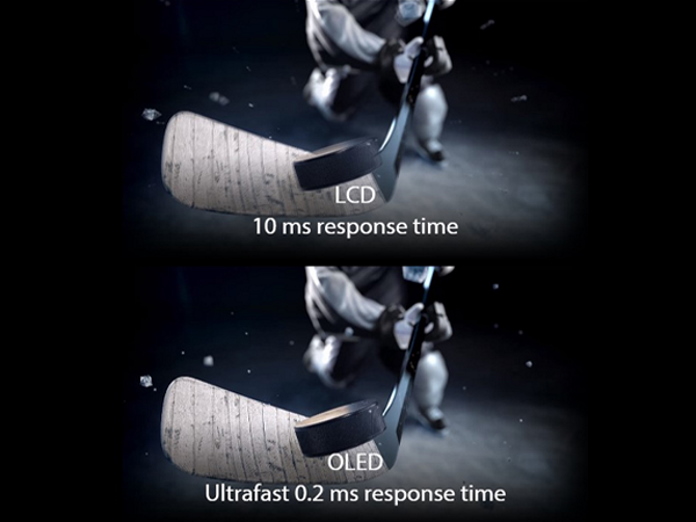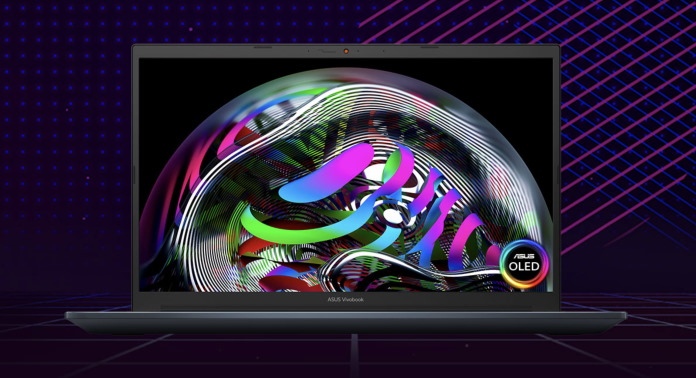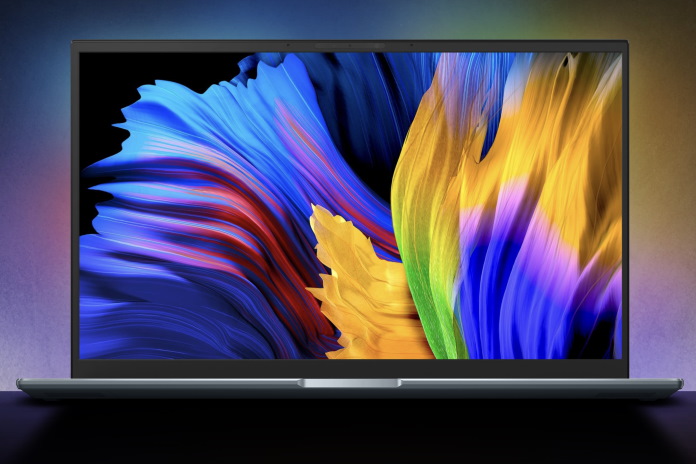OLED is the display technology that has everyone talking. Considering the inky shadows, vivid highlights, and lifelike colors that these panels can produce, it’s no wonder. For 2022, we’re offering this coveted display tech across a wide range of our ProArt Studiobook, Zenbook, and Vivobook families of laptops. From our affordable everyday laptops to our premium, luxury machines, you’ll find an OLED-equipped laptop that fits your needs and budget. So what sets these displays apart from the competition? Here, we’ll break down the LCD vs. OLED debate so that you can pick the best laptop for your needs.
OLED offers lifelike images
If you bought a high-end smartphone in recent years, you likely already have an example of this premium panel tech ready to hand. Ever wonder why photos and videos seem to look better on your phone than your old laptop? That could be because OLED displays excel at producing lifelike images with vibrant colors and striking contrast.
Both LCD and OLED displays create the image on your screen using millions of individual pixels. However, on standard LCDs, those pixels are illuminated by an always-on backlight, usually an array of large LEDs, that light up the entire screen at once. It’s an efficient arrangement, but it hinders a display’s ability to produce inky shadows, since the black pixels still have some light behind them. On an OLED display, however, there is no backlight—instead, each pixel acts as its own light source, and can be turned on or off independently of the others. This means that black portions of an image can be truly black, because there’s no light source shining through behind them.

OLED panels also excel at displaying vibrant, lifelike colors. Typically, they offer wide color gamut coverage comparable with the color production of expensive studio-grade monitors. Between the intense colors, inky shadows, and striking highlights, OLED panels deliver an image that leaps off the screen. For media of all kinds, you’ll see the difference right away.
OLED delivers exceptional low-light performance
For folks who often use their laptops in well-lit rooms full of natural light, a display with a high peak brightness is crucial. Our Vivobook Pro 16X OLED, for example, offers a 550-nit peak brightness so that you can comfortably use the laptop wherever, whenever.
But a display’s low-light performance matters, too. You probably turn down the brightness when you’re in a dimly lit bedroom to conserve battery life—and so it doesn’t sear your eyes when you open a website with a white background. Unfortunately for LCD displays, their contrast and color production often suffer at low brightness levels, leading to a washed-out image where it’s hard to distinguish one color from another. An LCD might only cover 11% of the DCI-P3 color gamut at its lowest brightness setting. To make matters worse, many LCDs introduce distracting, annoying flicker at low brightness levels due to their use of pulse-width modulation (PWM) techniques.

OLED panels, on the other hand, shine in this scenario. Much more than LCDs, they can deliver the vibrant colors and striking contrast that makes your content immersive and text easy to read. ASUS OLED panels maintain 100% DCI-P3 color gamut coverage at both high and low brightness levels, giving you accurate, lifelike colors across the board. Our OLED panels are certified for flicker-free performance by TÜV Rheinland, too. For comfortable use in a wide range of scenarios, OLED panels are the way to go.
OLED offers wide viewing angles
When many of us think about using our laptop, we imagine ourselves sitting directly in front of the screen. While this is how folks commonly use a laptop, it’s not the entire story. You’ve probably watched a movie on your laptop with a loved one, collaborated with a classmate on a project, or followed an online recipe as you cooked dinner. Look at an LCD display from a sharp angle, as you likely had to do in any of these instances, and you’ll often see an ugly, color-shifted image.

This is another circumstance where OLED panels stand out from the other options. While some types of LEDs, notably IPS panels, offer wide viewing angles, OLED displays tend to offer wider viewing angles than even the best LEDs. With an OLED-equipped laptop, you’ll always have a clear view of the screen, even in those regular moments when you’re not looking at it straight-on.
OLED panels emit less blue light
An LCD display has a single, always-on backlight that emits broad-spectrum white light similar to what you see during the daytime. That’s fine during typical working hours, but prolonged exposure to blue wavelengths in the evening hours can disrupt your circadian rhythm and make it harder for you to fall asleep.* That’s why we offer a range of Eye Care monitors that give you tools for reducing your exposure to blue light.
Another option is an OLED display. Since each pixel in an OLED panel is its own light source, these displays automatically emit less blue light than LCD options under almost all conditions—about 70% less, compared with standard LCD displays.** You’ll be much more able to browse your TikTok feed or catch a show before bedtime without throwing off your sleep schedule. And your eyes will get fatigued more slowly when you use your PC, making you better able to finish a creative project while you’re still feeling the inspiration.
OLED is a natural fit for HDR content
Netflix, Amazon Prime Video, and Disney Plus all let you stream movies and shows in High Dynamic Range, or HDR. An increasing number of games let you play in HDR, too. No matter what kind of content you enjoy, odds are you’ll want your next laptop to enjoy the inky shadows, dazzling highlights, and wide color gamut coverage of the next generation of media.
There are LCD displays that deliver a credible HDR experience, but OLED displays are a more natural fit for the content. The infinite contrast of an OLED display lets you have a brightly shining pixel right next to a perfectly black one, perfect for displaying high-contrast scenes. Bright stars in the infinite blackness of space, fireworks bursting across a night sky, and the sun setting behind a natural landscape never looked so good as they do on an OLED display. Look for laptops with Dolby Vision support and a VESA DisplayHDR 400 True Black or DisplayHDR 500 True Black certification to ensure the best experience.

That said, you certainly can get an LCD display that’s primed and ready for HDR. Our ROG Zephyrus Duo 16 includes a display option with a full-array local-dimming (FALD) backlight comprising 512 Mini LEDs that approximate the contrast ratio that an OLED panel can achieve. On top of that, it offers an 1100-nit peak brightness and a VESA DisplayHDR 1000 certification. That increased high-end luminance means that you can see more detail in bright images than you would on an HDR display with lower peak brightness.
OLED displays offer extraordinary clarity
When you’re watching an action movie, cheering on your favorite athletes during March Madness, playing a round of Fortnite with your friends, or simply tracking the movement of your mouse cursor across the screen as you get some work done, the clarity of moving objects on your display matters. The key spec here is response time. Each pixel on any display takes a small but noticeable amount of time to transition from one color to the next. On a display with poor response time, this appears as a distracting blur that resolves and goes away when the image stops moving. Our OLED panels offer an exceptional 0.2ms response time that gives you absolute clarity in moving images. Comparable LCD displays can take up to 10ms to switch colors.

It’s not just the sharpness of any given image that’s improved by low response time. The accuracy of any given pixel is affected, as well. A typical 60Hz panel refreshes the content on the screen every 16.67 milliseconds. If a pixel takes 10ms to transition to the correct color, then it only actually spends 6.67ms displaying the correct color. A pixel that only needs 0.2ms to transition to the correct color displays that color for almost the entirety of the refresh cycle. Whether you’re watching an action-packed movie, cheering on your favorite sports team, or digging into a great nature documentary, you’ll see a clear image throughout instead of blurry motion.
However, not all LCD displays are built the same. Purchase a gaming laptop equipped with one of our ROG Nebula Displays, and you’ll enjoy a speedy 3ms response time. What’s more, LCD panels are capable of reaching refresh rates that OLED can’t currently match. Our ROG Strix SCAR laptops, for example, can be equipped with a lightning-quick 360Hz display. If you’re shopping for a laptop primarily for fast-paced competitive gaming, a high-refresh-rate LCD display is likely a better fit for you. Click here to read about our different families of gaming laptops.
Our laptops are built to avoid image retention
As you read articles about OLED displays and watch reviews on YouTube, you might notice people talking about “burn-in.” More accurately known as image retention, this is a type of image distortion that can occur when users display static images or on-screen elements at peak brightness levels uninterrupted for many hours, if not days, at a time. Most folks simply don’t use their monitors in this way, so in real-world usage, you can purchase a laptop with an OLED display with the confidence that you’re unlikely to encounter image retention issues. For additional peace of mind, check out the results of a long-term uniformity test conducted by a trusted independent media outlet.

To provide an additional layer of protection against image retention, we include a suite of ASUS OLED Care settings in the easy-to-use MyASUS app. Pixel refresh launches a special screen saver when your display has been idle for 30 minutes that refreshes your screen pixels and optimizes picture quality. Pixel shift moves display pixels almost invisibly to help make sure that static images aren’t constantly displayed on your desktop. And we make it easy to adjust your Windows taskbar settings so that this static display element doesn’t cause any long-term image retention issues.
Some best practices can give you even more assurance that your OLED display will deliver a pristine image over the expected lifetime of the device—and they’re things that you’d likely already do with your laptop anyway. It’s prudent to have the display turn off due to inactivity after a certain amount of time. Rather than leave the brightness level at maximum constantly, it’s a good idea to dial back the display brightness to best fit the surrounding ambient light. Both of these prudent measures help extend battery life, as well, so you likely do these things with your laptops anyway. Finally, our OLED-equipped laptops ship with Dark Mode enabled in Windows by default so that static UI elements aren’t unnecessarily bright.
LCD vs. OLED: The verdict is in
For most users, an OLED panel is a better fit than an LCD panel. The infinite contrast these displays provide make them more comfortable to use in a wide range of applications. Whether you’re connecting with friends on social media, skimming through your email, watching the latest show, or just browsing your favorite sites, an OLED panel will elevate your experience. Ultra-wide viewing angles let you share any of these things with family, friends, coworkers, and clients. And the list goes on—this display option sets you up for immersive HDR media, takes care of your eyes with its reduced blue light emission, and gives you exceptional clarity in moving images.
There are folks out there for whom LCD panels are a superior choice. Gamers, in particular, benefit from the sky-high refresh rates and ever-lowering response times afforded by LCDs. And those who want an HDR experience augmented by the absolute highest peak brightness levels may prefer an LCD equipped with an ultra-bright FALD backlight.

For just about everyone else, the advantages of OLED panels make them the clear winner of the LCD vs. OLED debate. For too long, display aficionados had to hunt for devices equipped with this class-leading tech. Now, we’re offering OLED panels across a wide range of laptops.
Looking for a highly portable laptop with a detachable keyboard? Check out the eminently affordable Vivobook 13 Slate OLED. Need a blend of performance, portability, and elegance? The Zenbook Flip 14 OLED gives you muscular performance with its AMD Ryzen 5000-series CPU. For creators, we have a wide range of laptops equipped with OLED panels. Click here to learn more. For every budget, need, and preference, we have an OLED laptop ready and waiting. Find your next laptop today.
*See: http://large.stanford.edu/courses/2017/ph240/kersten2
**Compared to average LCD displays in the market, measuring energy emission of blue light in between 415-455 nm wavelength.

